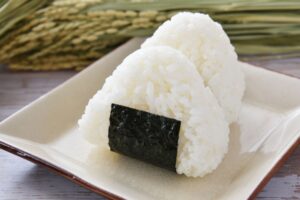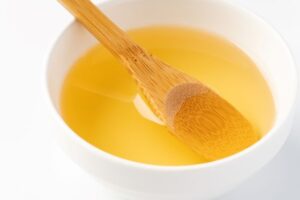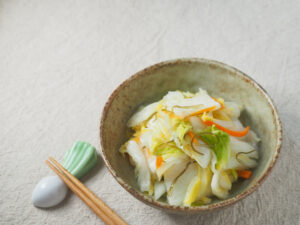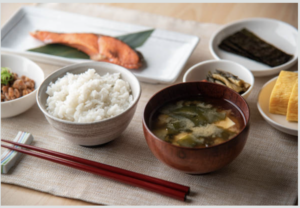history of japanese food ingredients and seasonings
———————————————————————————-
One of the charms of Japanese food lies in the richness and variety of its ingredients and seasonings. In particular, Japanese cuisine makes the most of fresh seasonal ingredients to create simple yet deeply flavored dishes, and the use of seasonings is also unique. In this issue, we will explore the history of how the ingredients and seasonings of Japanese food have developed.
1 Ancient Ingredients: Rice, Vegetables, and Fish
———————————————————————————-

Rice is an essential ingredient in Japanese food culture. Rice is a staple food that forms the basis of Japanese cuisine and is closely linked to the lives of the Japanese people. Rice cultivation was introduced from China around the 3rd century B.C. and took root in Japan. At first, the custom of eating rice spread only to a limited number of regions, but it gradually spread throughout the country and became the “rice = the basis of Japanese food” as we know it today.

Another important Japanese food is fish and marine products. Because Japan is surrounded by the sea, fresh seafood is abundant, and many dishes using this seafood have developed. In particular, there is a wide variety of ways to prepare fish, such as sashimi, sushi, boiled fish, and grilled fish, reflecting the characteristics of each region. In addition to fish, kelp, seaweed, and shellfish are also essential ingredients in Japanese cuisine.

Vegetables are also an essential element of Japanese cuisine. Vegetables unique to Japan include eggplant, squash, radish, and lotus root, all of which are varieties adapted to the Japanese climate, and cultivation techniques have evolved over a long history. Cooking with seasonal vegetables is a distinctive part of Japanese cuisine and allows one to savor the delicacies of each season.
2 Origin and Development of Seasonings
———————————————————————
Another element that characterizes Japanese food is its seasonings. Japanese food is flavored with a small number of different seasonings, such as salt, soy sauce, miso, vinegar, and mirin. These seasonings have been handed down and evolved over generations.

Salt is the most basic seasoning in Japanese cuisine. The use of salt has been around since ancient times, especially in Japan, where natural salt from the sea is abundant, and it is believed that the ancients used this sea salt for their food. Salt was also used as a method of preserving fish, and was also used in pickles.

Soy sauce is the most representative seasoning in Japanese cuisine and is widely recognized worldwide. The origin of soy sauce can be traced back to a fermented food called “shoyu” that came from China. In Japan, soy sauce production began in the Heian period (794-1192), and by the Edo period (1603-1868), soy sauce in its present form was perfected. Soy sauce from the Edo period is particularly famous, and this is what gives sushi, sashimi, simmered dishes, and many other Japanese dishes their indispensable flavor.

Miso is another fermented seasoning essential to Japanese cuisine. Miso is made by fermenting rice and soybeans, and is a uniquely Japanese seasoning that has been handed down since ancient times. In the Heian period (794-1185), miso was used in court cooking, and today it is an indispensable part of Japanese home cooking. The taste of miso varies greatly depending on its type and regional characteristics. There are red miso, white miso, and combined miso, and the best one for each dish is used.

Mirin is a seasoning used in Japanese cooking to add sweetness, especially in simmered and teriyaki dishes. Mirin is made by fermenting rice, malted rice, and alcohol, and its sweetness and mildness create the unique flavor of Japanese cuisine. Mirin was developed during the Edo period (1603-1867) and came to be used in cooking as we know it today.

Vinegar is a seasoning that adds acidity, an essential ingredient in Japanese cuisine. Vinegar is often used especially in sushi and vinegared dishes. Japanese vinegar is made by fermenting rice, which gives it a mild flavor. Vinegar has been used since the Nara period (710-794).
3 Importance of Fermented Foods
————————————————————
One of the characteristics of Japanese food is the abundance of fermented foods. Fermentation is a technique that has been used in Japan since ancient times as a method of preserving foodstuffs, and is now attracting attention as people become more health-conscious.

Natto is a typical fermented food. Made by fermenting soybeans, natto has been an essential ingredient in Japanese food culture since ancient times. Natto is still eaten in many households today for its unique flavor and health benefits.

Pickles are another type of fermented food, made by fermenting vegetables by soaking them in salt or rice bran. Pickles not only preserve food for a long time, but also serve to add a refreshing sour taste to meals. Each region has its own unique pickles, which are popular throughout Japan.

Sake and vinegar also play an important role as fermented foods. Sake and rice vinegar are made by fermenting rice and are used in cooking and are also an integral part of celebrations and ceremonies.
4 Development of Seasonings and Ingredients for Japanese Food
———————————————————————————————————–

Seasonings and ingredients for Japanese food have developed over time. Particularly since the Edo period (1603-1867), commerce developed and local specialties and unique seasonings became widespread. This led to the creation of dishes that strongly reflect the characteristics of each region, which has now become the basis for the diversity of Japanese cuisine.
In addition, although new seasonings and ingredients influenced by Western cuisine have appeared since the Meiji era, the basis of Japanese food is still rooted in simple and healthy eating that makes the most of nature’s bounty.
Conclusion
—————————–

Ingredients and seasonings in Japanese cuisine have evolved over a long history, reflecting the characteristics of each region. The characteristics of Japanese food, such as rice, vegetables, fish, and fermented foods, which make the most of nature’s bounty, form the basis of the food culture. In addition, many of the seasonings are simple yet deeply flavored, giving Japanese cuisine its unique flavor. The fusion of these ingredients and seasonings is what makes Japanese food so loved throughout the world.
